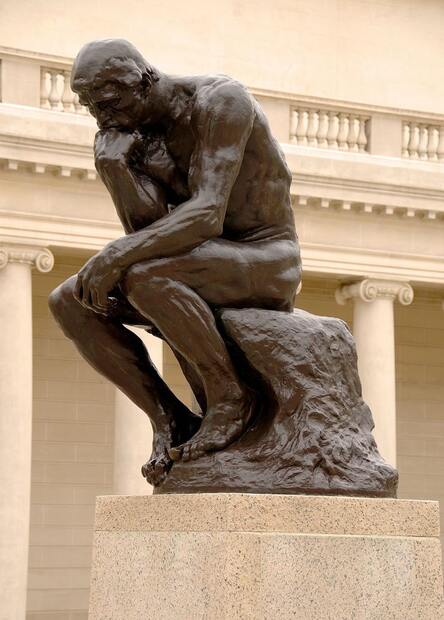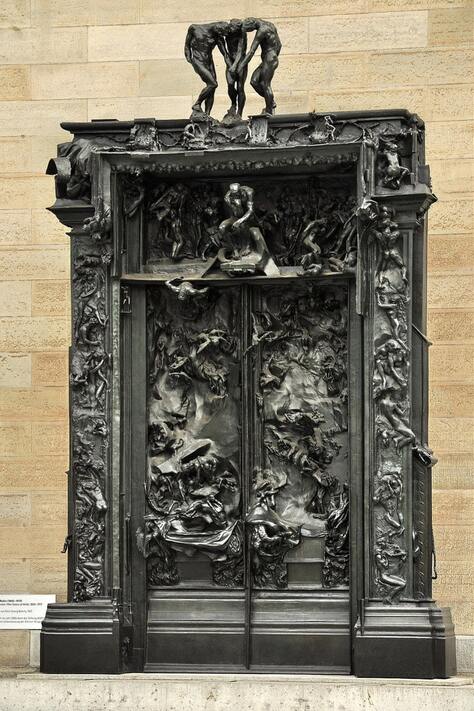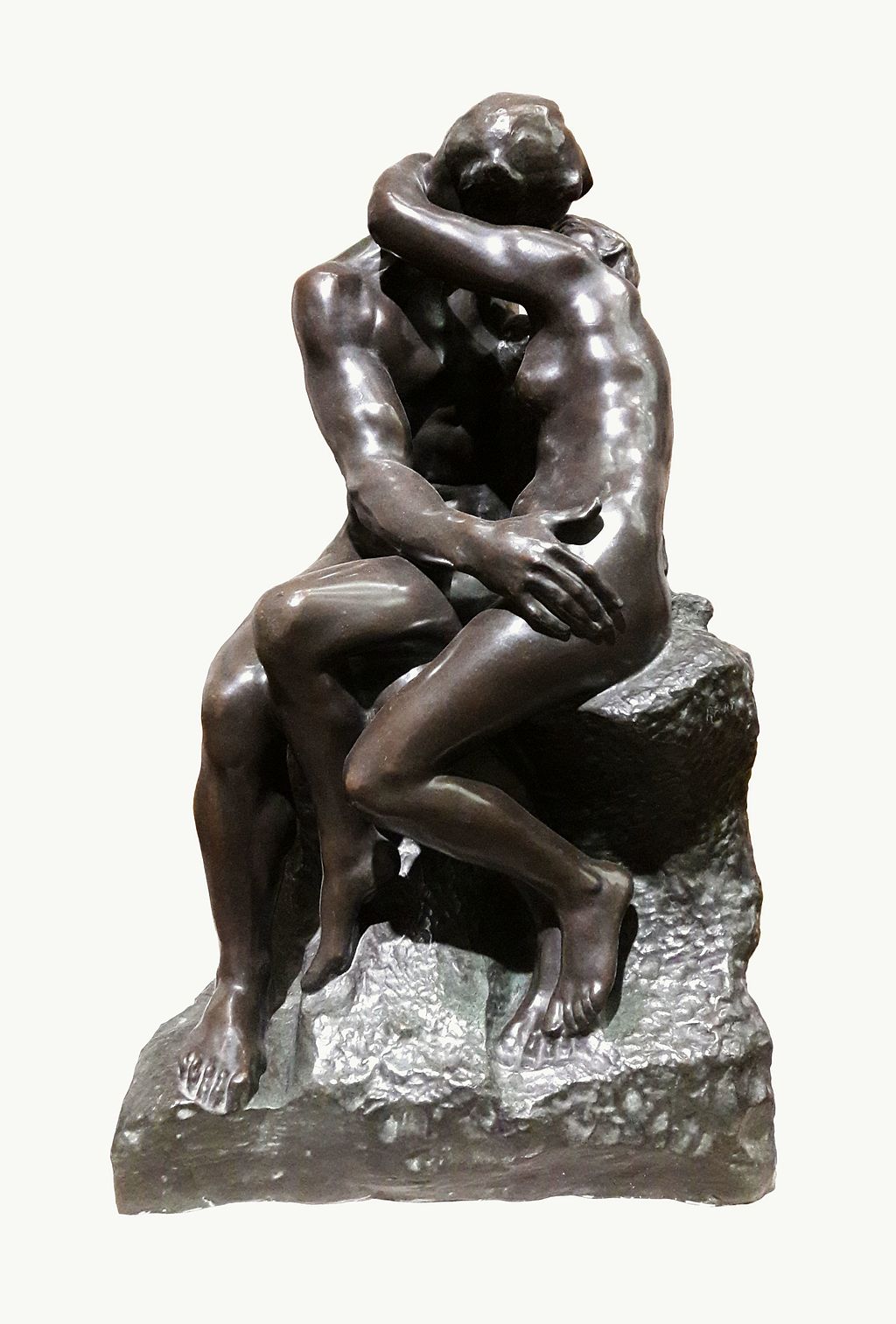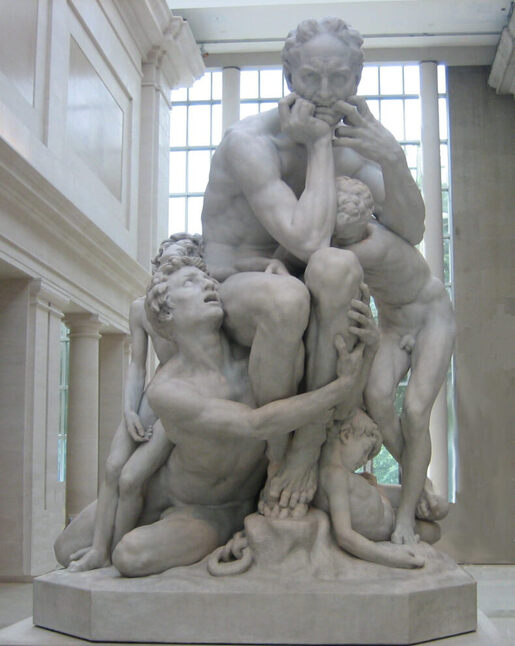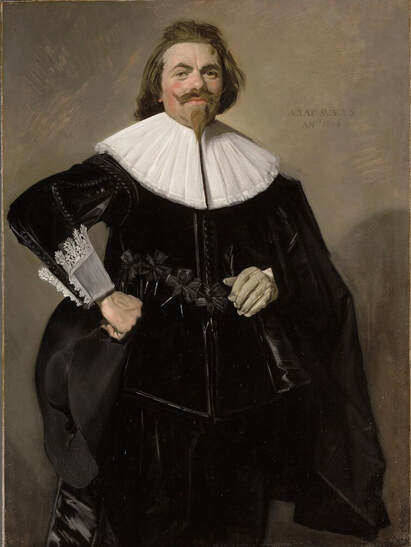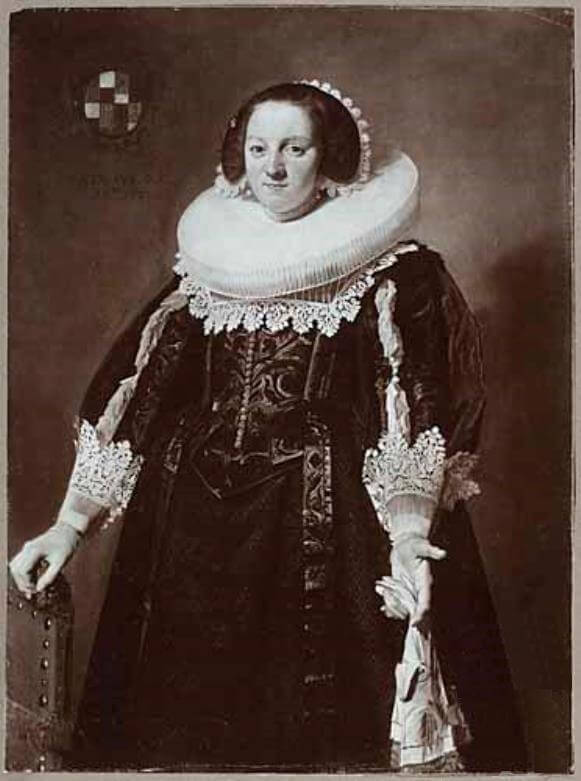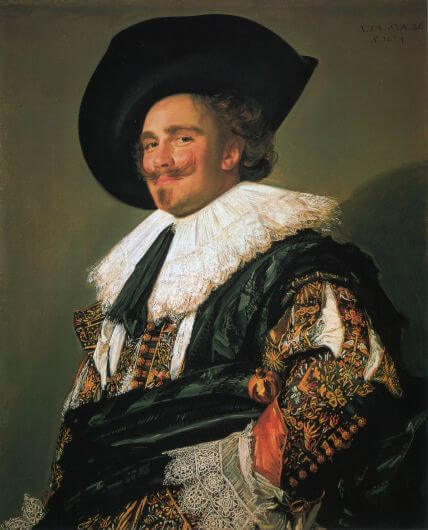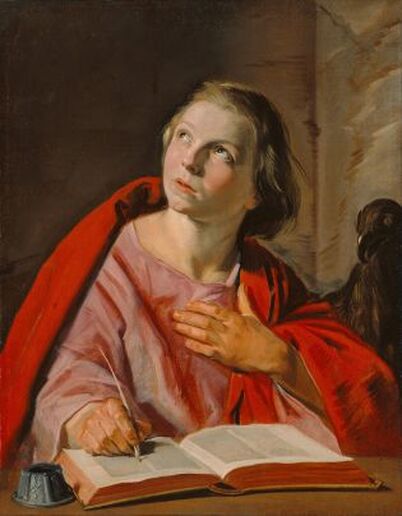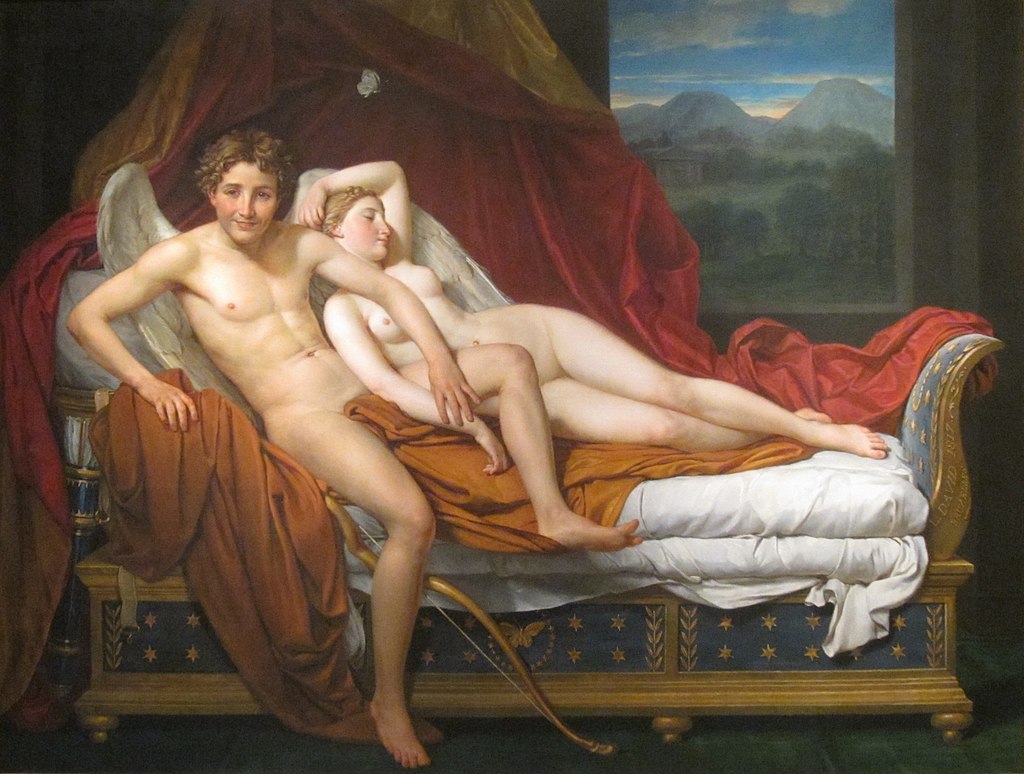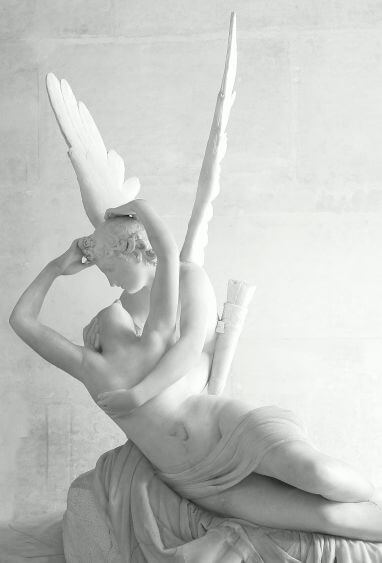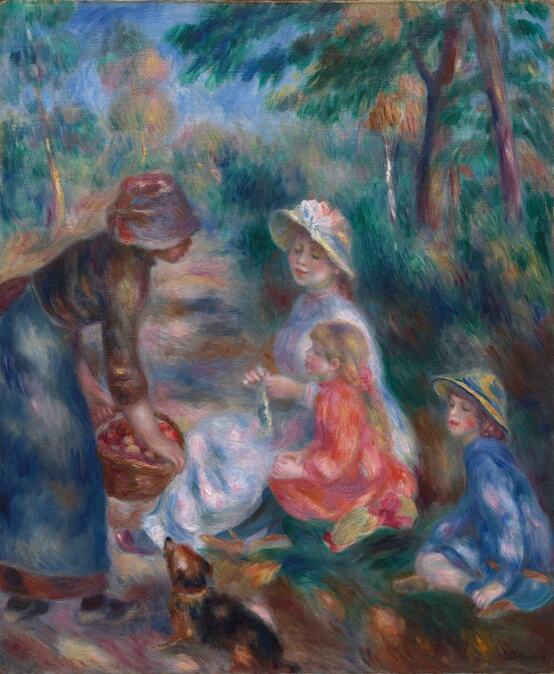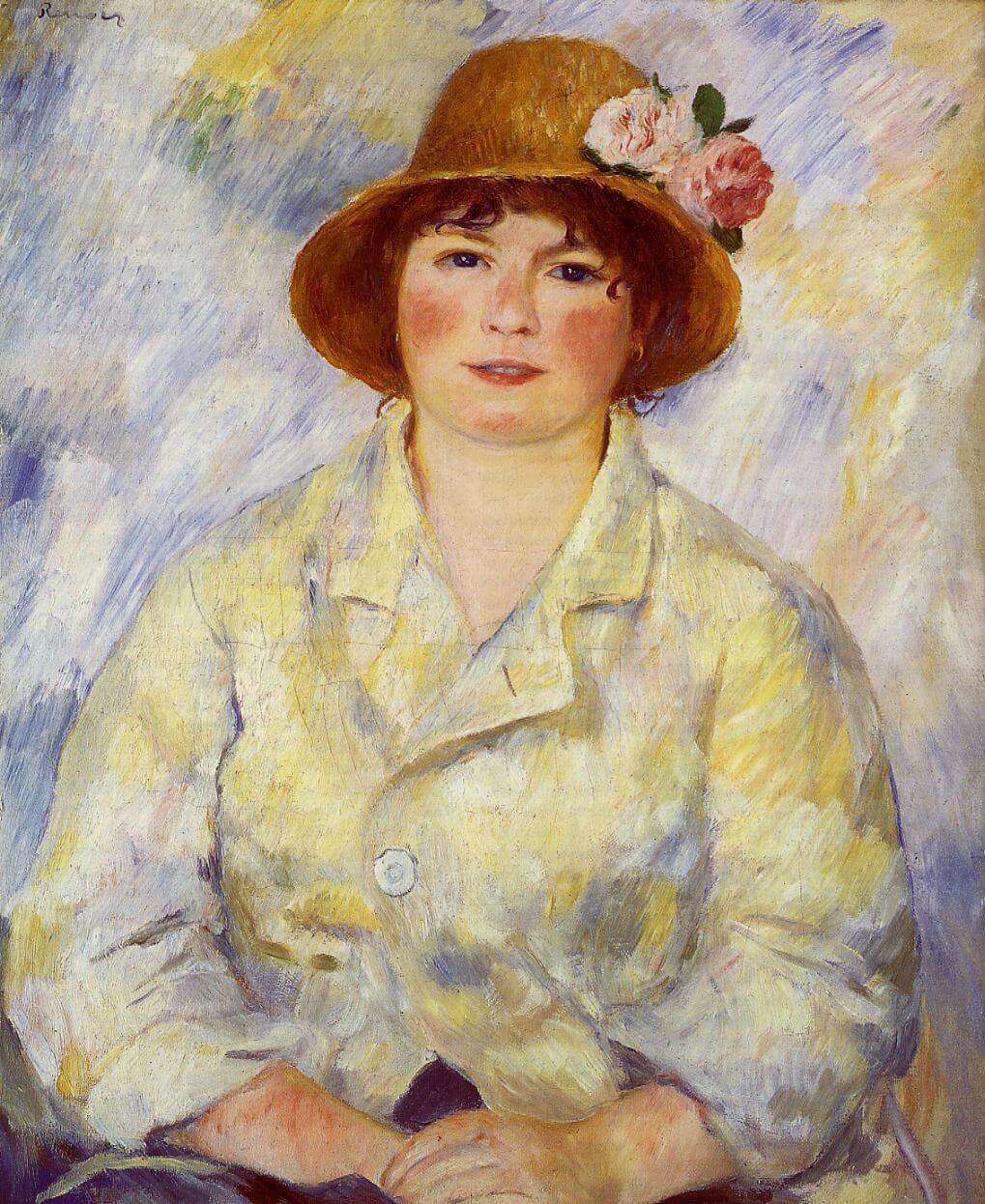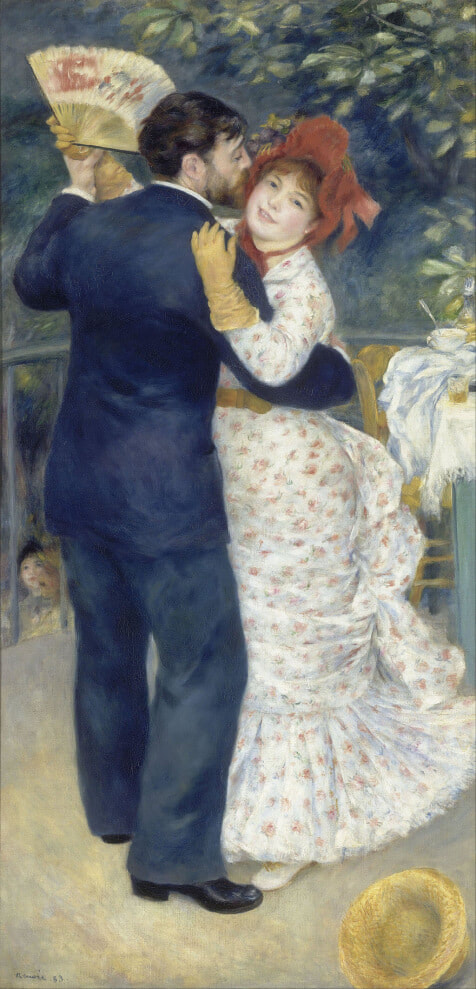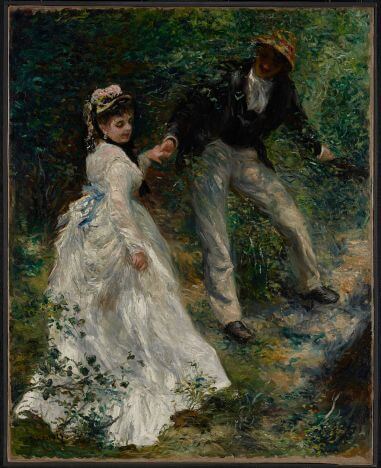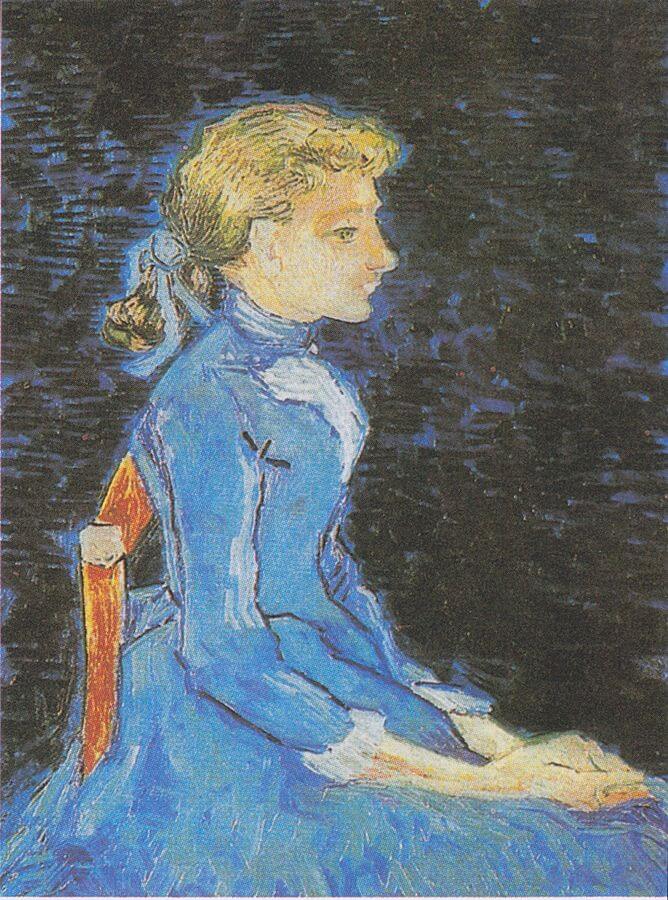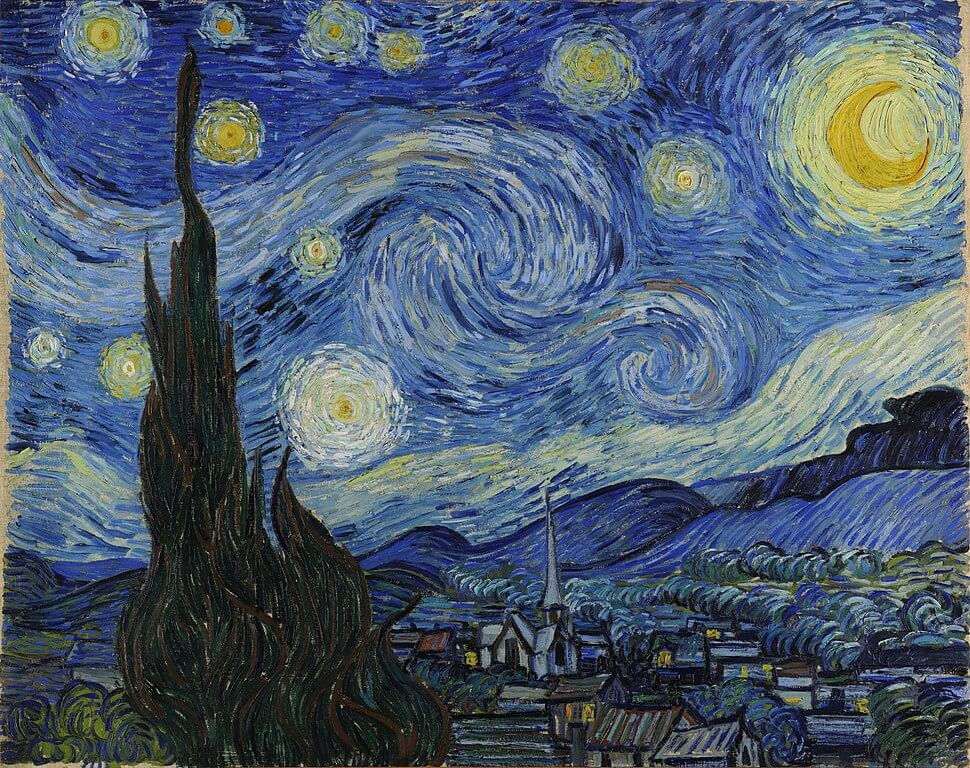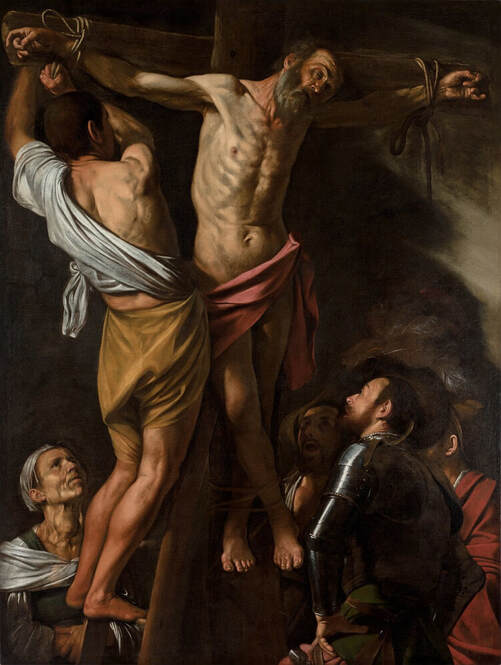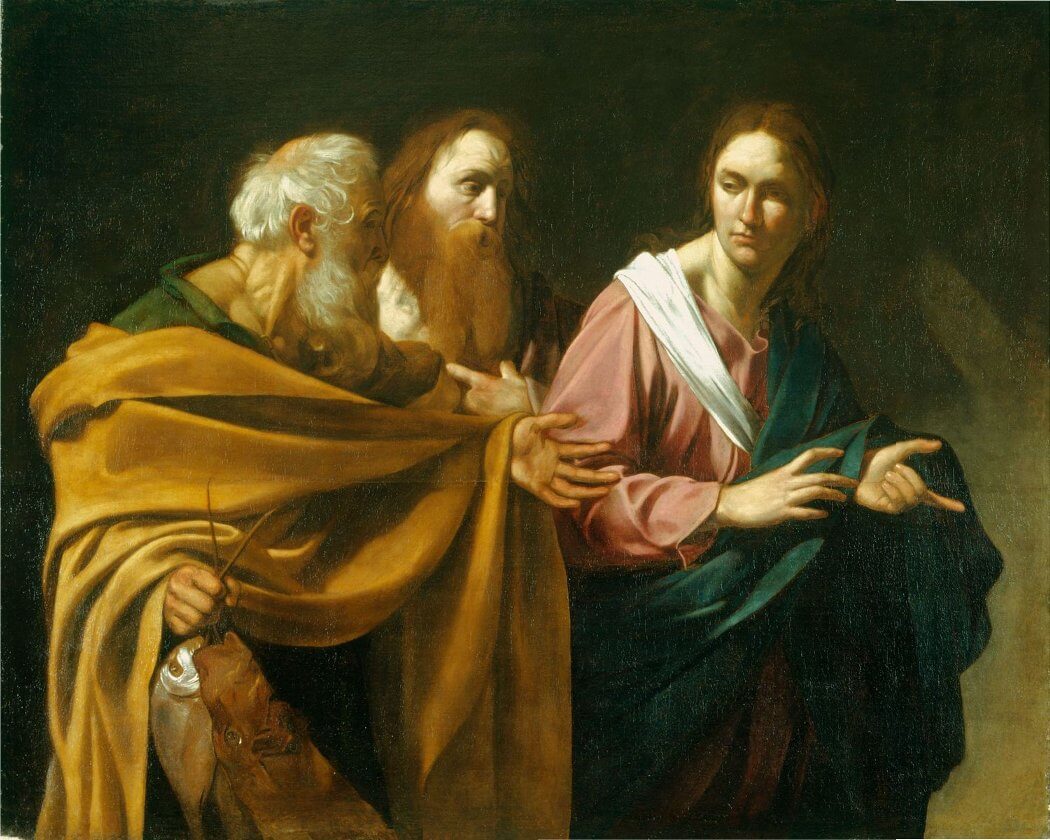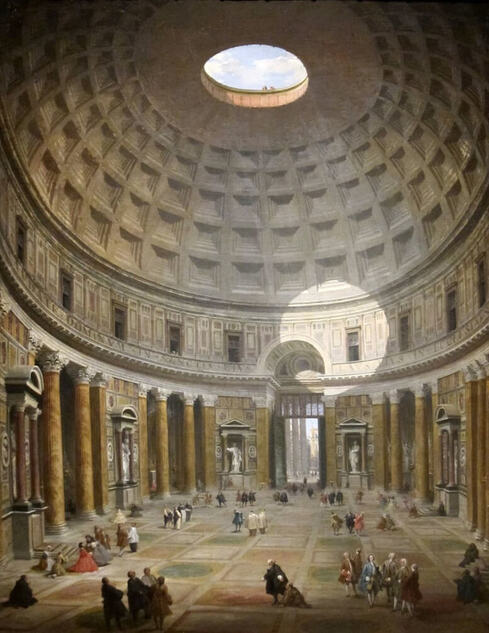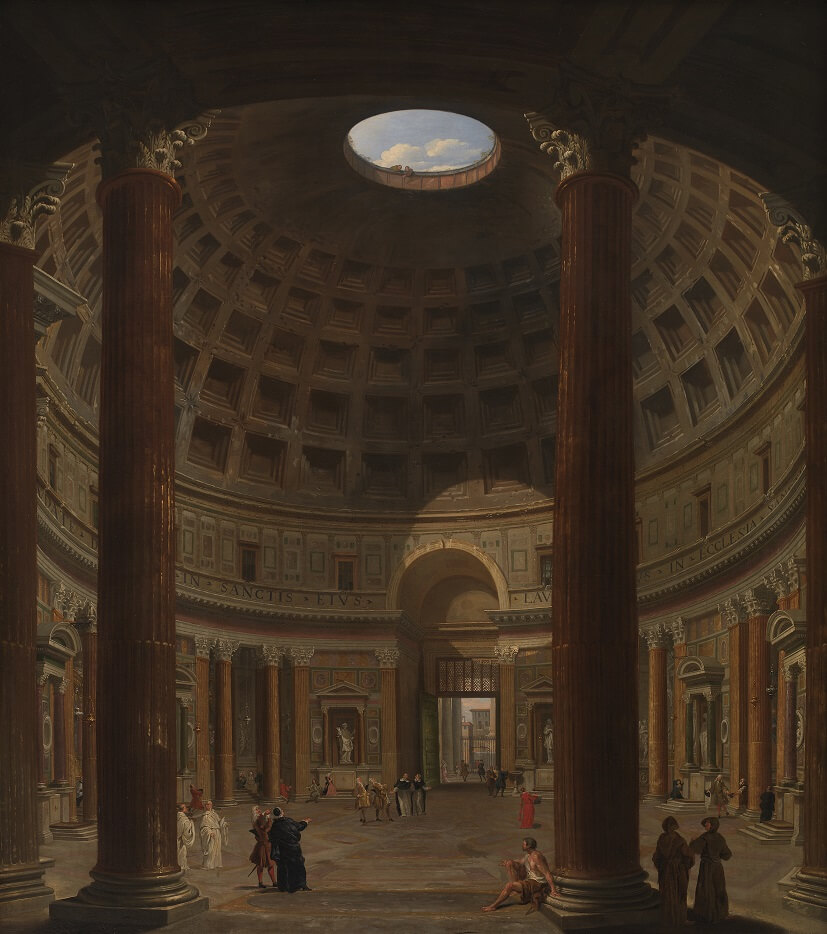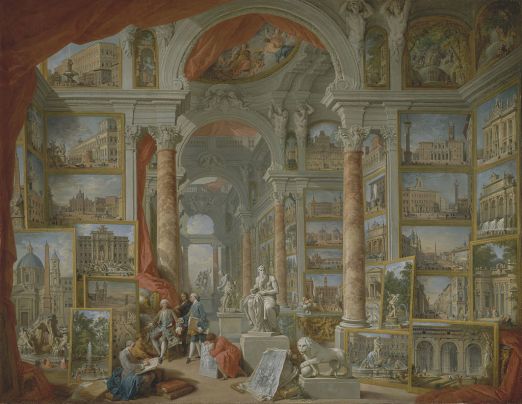|
Where?
When? Rodin created the original sculpture in 1881. He created the first monumental-size sculpture in 1903 and after this many casts of the sculpture have been created, even after his death in 1917. What do you see? A sculpture of a muscular, naked man sitting on a rock. The man is in deep thought and uses his whole body to think. His head is bent forward and leans on his right hand. His wrinkled face, knitted eyebrows, swollen nostrils, compressed lips, and absent-minded gaze reinforce the idea that the man is deep in his thoughts and is completely unaware of the world around him. The man is struggling with his thoughts with every part of his body. Almost no part of his body is relaxed. Most muscles are tense, which is clear by looking at the clenched fist, the arched back, the legs below his body, and the squeezed toes. The statue is over six feet tall making the figure larger than life. It was the intention of Rodin to put the independent sculpture on top of a pedestal such that it would make a colossal impression on the viewers. Backstory: In 1880, Rodin received a large commission from the Directorate of Fine Arts in France to create the entrance doors for a new museum that was to be built (but never opened in the end). He was given the freedom to choose his own theme and decided on creating a scene from Dante’s book Inferno. Rodin was supposed to finish the project in five years but continued to work on the project for 37 years until his death in 1917. The doors – named The Gates of Hell – would eventually include a total of 180 different figures, and they would form the basis for many of Rodin’s most famous statues. Rodin originally created all figures in plaster, and the doors were then to be cast in bronze. The central and the most important part Rodin created for these doors was the statue of The Thinker (Le Penseur in French) who sits right above the two doors with all the characters from the Inferno behind him. The statue was about 27 inches (70 cm) high.
Multiple versions: The statue of The Thinker can be found all around the world. Rodin created the first version of this statue in plaster in 1881. In 1903, he completed the first monumental-size version of this statue. He considered it to be a remarkable piece and wrote to the client of his first bronze casting that he would ensure that only a few copies of the statue would ever be made. However, he did not keep his word.
During Rodin’s life, already more than 20 versions of The Thinker were produced. And after his death, the right for reproduction was turned over to the Republic of France. Nowadays, more than 70 bronze and plaster versions exist and are on display in Asia, Australia, Europe, North America, and South America. Interpretation: There are various interpretations of what and who The Thinker represents. When initially creating this statue as part of The Gates of Hell, Rodin meant the figure to represent Dante pondering about the fate of the damned people entering through the Gates of Hell. This interpretation is based on Dante’s book Inferno, the first part of his trilogy known as The Divine Comedy. When Rodin started to create independent versions, he started to consider different interpretations. Overall, he considered the statue to represent the struggle of the human mind. But he also started to see hope in it. The thoughts slowly become clear, and the man turns from a thinker, into a dreamer, and finally into a creator. Over time, other interpretations have also been given. Some consider the statue to represent Rodin himself. Others interpret the figure as Adam contemplating the sin he committed in Paradise. Who is Rodin? François Auguste René Rodin was born in 1840 in Paris, where he died 77 years later in 1917. He was rejected three times by the leading art school in Paris, the École des Beaux-Arts. It forced him to educate himself differently and this has contributed to his unique style. He was inspired by some of the great Renaissance sculptors like Donatello and Michelangelo. Most of Rodin's famous sculptures were originally intended for his commission of The Gates of Hell. Over time, he realized that he could turn many elements of The Gates of Hell into separate statues and some of these statues have achieved world fame. Among them are The Three Shades and The Kiss. Many of Rodin’s statues have been cast multiple times in bronze which means that his statues have spread across the world.
Why a bronze statue? Bronze is a combination of different metals. It consists primarily of copper (typically 85-90%) and tin (typically 10-15%), but can also contain minor quantities of other metals or nonmetals. It is an attractive material for sculptors for the following reasons.
Fun fact: While The Thinker is one of the most famous statues in the world, Rodin initially named this statue “the poet.” Later it was renamed based on suggestions by foundry workers that the sculpture was quite similar to a sculpture by Michelangelo on Lorenzo de’ Medici, Duke of Urbino. This sculpture was more popularly known as “Il Penseroso” (The Thinker), and this name was also given to Rodin’s statue. The Thinker also shows some resemblance to Ugolino and His Sons which was created by Jean-Baptiste Carpeaux in the 1860s.
1 Comment
Where? Gallery 213 of the Cleveland Museum of Art
When? 1634 Commissioned by? Tieleman Roosterman and his wife Catharina Brugmans What do you see? The 36-year old Tieleman Roosterman looks at us with a serious and confident expression. He is painted in three-quarter length. Hals pays careful attention in painting his costume, which is not surprising given that Roosterman was an international clothing merchant. Roosterman wears a doublet, which is a short, close-fitting padded jacket. The jacket is decorated in the middle with metal or silver decorations. On top of the doublet, he has a big white ruffled collar. He has slashed sleeves, and on his right sleeve, he has a white cuff with lace edges. He has a glove on his left hand. He wears black breeches, which are a 17th-century type of pants that run just below the knee or till the ankles. In his right hand, he holds a large black hat made of beaver fur (such hats were popular during that time as they could be turned into a variety of shapes). All the items that Roosterman is wearing were very fashionable during his time. Inscription: To the right of Roosterman’s head, Hals included an inscription reading “AETAT SVAE 36 ANO 1634”. This means that Tieleman Roosterman was at the age of 36 at the time of the painting and that it was painted in 1634. Roosterman and his wife, Catharina Brugmans, commissioned Hals to paint a portrait of both of them to celebrate their third wedding anniversary. The Portrait of Catharina Brugmans is in a private collection. When the Portrait of Tieleman Roosterman was auctioned in 1999, it also included a coat of arms and a crest above the inscription. However, by then it was known that the coat of arms contained a pigment that was only available almost a century after Hals painted it. Thus, the coat of arms was removed from the painting by the Cleveland Museum of Art to show its original composition.
Backstory: The Cleveland Museum of Art acquired this painting in 1999 for $12.8 million, a record for a Frans Hals painting at that time. Saint John the Evangelist held the previous record. This work by Frans Hals was sold in 1997 for $2.7 million to the Getty Museum.
Who is Tieleman Roosterman? A rich textile merchant from Haarlem, The Netherlands. He operated internationally and specialized in fine linen and silk. He was born in 1598, married in 1631, and died in 1673, all in Haarlem. Together with his wife, he baptized ten children. Tieleman Roosterman is probably also the model for The Laughing Cavalier painted in 1624 by Frans Hals. This painting is in the Wallace Collection in London.
Who is Hals? Frans Hals the Elder was born at the end of 1582 (or early 1583) in Antwerp, Belgium, and died in 1666 in Haarlem, The Netherlands. He painted many portraits and was a true specialist in characterizing his subjects. At the beginning of his career he created more colorful paintings but when he got older the colors he used became darker. Many artists (including Van Gogh) admired the many shades of a single color that he used in his works, and the current painting of Tieleman Roosterman is already a good example of Hals using many shades of black.
Fun fact: This painting was sold in 1999 to the Cleveland Museum of Art by the Austrian branch of the Rothschild family. In 1999, the Austrian government returned many items to the Rothschild family after the Nazis seized these items 61 years earlier. Before 1999, most items were on display in Austrian museums. After their return, the family decided to put many of the items up for sale because their houses were not big enough to properly display all the items. The painting of Tieleman Roosterman was sold with two other paintings by Hals and many other historical items at the auction house Christie’s in London. Interestingly, among the bidders for the items in the collection were several members of the other branches of the Rothschild family (they form a large and very wealthy family with branches all over Europe). It was reported that members of the French and British branch bought some of the items during the auction. Interested in a copy for yourself? Poster or canvas. 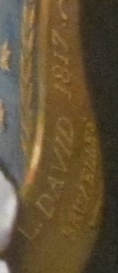 Inscription by David Inscription by David
Where? Gallery 201 of the Cleveland Museum of Art
When? 1817 Commissioned by? Giovanni Battista Sommariva, an Italian politician and art collector. What do you see? The beautiful nude Psyche sleeps on the bed after making love to Cupid. She has one arm over her head and the other arm lays over Cupid’s thigh. The couple lays on two large bedcovers that hang from the top of the painting. Cupid is awake and looks at the viewer with a smirky smile. He wears large white wings and has curly hair. However, something seems off about him. He looks like a teenager who is proud that he just made love to the most beautiful woman on Earth. He shows that pride with a somewhat annoying smile to the viewers. It seems that Cupid wants to sneak away as Psyche is not supposed to see who makes love to her every night. He tries to lift up the arm of Psyche such that he can leave (though he will still have to remove his wings from under Psyche’s body). The bow of Cupid stands against the bed below his right leg, and on the left side of the bed stands his quiver with arrows. Above the head of Psyche is a white butterfly, which is her symbol. Another butterfly is decorated on the middle of the bed frame in the middle of other gold decorations. In the background, we can look through a window at a landscape with mountains and a small temple. Jacques-Louis David has signed the painting on the footpiece on the right side of the bed. Backstory: This painting is also known under the name, Love and Psyche. Jacques-Louis David started this painting in 1813 when he still lived in Paris and finished it in 1817 when he lived in exile in Brussels. Before his exile, David was known for his paintings with political and social messages, but after his exile, he seemed to focus on less complicated subjects like the current painting. His sketchbooks from before his exile already contained many drawing of mythological subjects, so his exile was a good reason to convert some of those ideas into paintings. The story of Cupid and Psyche? This painting of Cupid and Psyche is based on a story that the Roman writer, Apuleius, wrote in his book Metamorphoses, chapters four, five, and six (you can download the book here for free). In short, Psyche was considered the most beautiful woman alive, and Cupid fell in love with her. The goddess Venus was jealous of her beauty. So, she sent Psyche on a very dangerous journey to the underworld to collect a flask with Proserpina’s beauty ointment. She succeeds with the help of Cupid. Venus instructed Psyche not to open the flask, but after she completes the journey, she could not resist and opened it to take some of the beauty. Instead of becoming more beautiful, the ointment makes her fall into a very deep sleep as Proserpina had filled the flask with sleep of the innermost darkness. Cupid forgives Psyche and revives her. Antonio Canova created a sculpture on the moment just after this revival. The sculpture, Psyche Revived by Cupid’s Kiss, is in the Louvre. After this, Cupid asks for the help of Zeus who makes Psyche immortal and Cupid and Psyche marry and stay together forever. The story of Psyche has inspired many artists over time, including Caravaggio, Raphael, Titian, and Vélazquez.
Symbolism: Most artworks on Cupid and Psyche focus on the love between both. They would show both of them with idealized bodies. However, that is not the case in this painting. At first glance, this painting seems to be about physical desire. Cupid is not depicted as a very handsome man, but as a teenager with a far from ideal face. He shares his pride about making love to such a beautiful woman by smirking at the viewer.
Looking a bit longer at the painting, it also presents a scene of the morning-after. They made love during the night, and in the morning, Cupid tries to sneak away from Psyche without saying goodbye. There has been quite some speculation about any deeper meanings behind this painting, especially because of the awkward depiction of Cupid, but no dominant one has emerged. Who is Jacques-Louis David? Jacques-Louis David was born in 1748 in Paris. He was one of the most popular painters during his life and one of the most famous Neoclassical painters. He was a supporter of the French Republic and Napoleon and even became the court painter of Napoleon. The Coronation of Napoleon in the Louvre is one of the magnificent paintings he created for Napoleon in 1807. After the fall of Napoleon in 1815, David was exiled from France. He wanted to spend the rest of his life in Rome, but the Pope did not approve this. Instead, he went to Brussels where he spent the rest of his life until his death in 1825. While in Brussels, he continued painting. One of the works he created there was The Farewell of Telemachus and Eucharis in the Getty Museum.
Where? Gallery 222 of the Cleveland Museum of Art
When? Around 1890 What do you see? On the left, a girl from the country tries to sell apples to Aline Charigot, the wife of Renoir, and two kids. Aline Charigot wears a long light-colored dress, with hints of blue, white, and pink. She wears a hat with a fancy ribbon around it that matches her dress. The boy on the right is the nephew of Renoir, called Edmond. He wears a blue outfit with a blue and yellow hat. It is unknown who the girl in the red dress and the red bow in her hair is. The hat of the girl lays next to her. The apple seller wears a simple outfit with plain colors to indicate her relatively low status. She wears a country hat which largely covers her face and bends forward to show the apples. It seems that she is asking Aline Charigot whether she wants to buy some fresh apples for the kids. In the foreground is a small dog and we can see the contours of a forest in the background. Renoir used very light brushstrokes that are clearly visible on the canvas. This technique creates a unique combination between the light and colors in this painting. Backstory: Renoir created this painting during one of the summers which he spent in the small village, Essoyes, about 125 miles (200 km) Southeast of Paris. This village was the birthplace of his wife and they later also bought a house there. Renoir and Aline Charigot got married around this time, and Renoir may have painted this on their honeymoon. Who is Aline Charigot? Aline Charigot (1859-1915) was born in a small village, Essoyes, in France. She met Renoir in 1880 and started modeling for him. However, they soon got into a relationship with each other, and in 1885 they got their first son together. Renoir painted a portrait of Aline Charigot shortly after the birth of their son, which is now in the Philadelphia Museum of Art. He kept this portrait of her until his death. In 1890, they married. Aline Charigot modeled for at least 20 paintings of Renoir. For example, she is the woman in Dance in the Country in the Musée d’Orsay which Renoir painted in 1883.
Symbolism: While Renoir did not like to include symbolism in his paintings, there seems to be one clear contrast that he wanted to emphasize here. This is related to the contrast in the clothes of the apple seller, and the woman and children on the right. Whereas, the apple seller wears plain clothes with dull colors, the wife of Renoir and the two kids are dressed in fancy outfits. Renoir shows here the difference between the lower and upper-class people in 19th century France because he wanted to depict his wife and the two kids as part of the upper class of society.
Who is Renoir? Pierre-Auguste Renoir (1841-1919) was one of the leading French Impressionist painters. He mainly created colorful paintings of subjects and scenes that he enjoyed, such as scenes with leisure activities, and woman and children. So, most of his paintings do not contain a deeper message. Renoir got inspired by artists such as Degas, Delacroix, Manet, and Rubens. Some of his great works include A Girl with a Watering Can in the National Gallery of Art and La Promenade in the Getty Museum. The latter painting is another good example of a painting in which Renoir integrated his subjects with nature, just like he does in the current painting of the apple seller.
Fun fact: Renoir used quick and long brush strokes, combined with soft colors, to create this painting. He used a separate brush for each color that he used to make sure that he used pure colors for his brush strokes. You can clearly see the long vertical brush strokes in this work. He creates an effect where the scene seems out of focus. Especially, the forest in the background seems blurry, which helps the viewers to focus on the people in the foreground. When you observe the painting from a distance, the content becomes more clear.
Where? Gallery 222 of the Cleveland Museum of Art
When? 1890 What do you see? A portrait of Adeline Ravoux, the daughter of the innkeeper from whom Van Gogh rented a room. Adeline wears a blue dress with a high collar, a white bodice under it, and a blue ribbon in her hair. The color of the dress matches her blue eyes. While she was 12 years old when Van Gogh created this painting, she looks much older. This was actually the idea of Van Gogh, as he wanted to portray her as the woman she would become. Her expression is a bit aggressive or unhappy, which may imply that she hears about her future as a woman. On the right are two white flowers and a series of green leaves floating in the air. The white flowers may symbolize purity and innocence and may also refer to her future as a married woman. Backstory: Van Gogh created this painting one month before he committed suicide. He based this painting on an earlier work for which Adeline had posed. His idea was to develop a new style of portrait painting. As he wrote to his brother: “I should like to paint portraits which would appear after a century to the people living then as apparitions.” In other words, he wanted to create a ghostlike image of his sitters. To his sister Van Gogh wrote: “So I don’t try to do us by photographic resemblance but by our passionate expressions, using as a means of expression and intensification of the character our science and modern taste for color.” Other versions of Adeline Ravoux: Van Gogh made two other portraits of Adeline Ravoux, which are both in private collections. In one portrait of Adeline Ravoux, she is shown from the thighs up. This is the only portrait that he signed as he gave it to Adeline’s family. He created the portrait in a single afternoon. He made a copy of this painting, using lighter colors for the dress, which he gave to his brother Theo.
Who is Adeline Ravoux? She is the daughter of Arthur Gustave Ravoux, who was an innkeeper at Auberge Ravoux in Auvers-sur-Oise, about 20 miles North of Paris. Van Gogh spent the last 70 days of his life in this inn. Adeline Ravoux is prominently featured in the movie Loving Vincent. Van Gogh wrote in a letter that she was probably 16 years old at the time of the painting, but she was actually only 12 or 13 years old.
Loving Vincent: In 2017, the movie Loving Vincent was released. It is an animated film, based on paintings by Van Gogh. The movie took six years to produce. It takes place one year after the death of Van Gogh and uses characters who Van Gogh painted. As he painted Adeline Ravoux three times, she plays an important role in the movie. The movie was nominated for an Oscar but did not win one. Auberge Ravoux? Nowadays, Auberge Ravoux is better known as Maison de Van Gogh. It is open to visitors who can see the room in which Van Gogh spent his last nights. Van Gogh spent less than a dollar per day to stay in a room of seven square meters (75 square feet). This fee included meals. After Van Gogh died, the room was never rented again. There is nothing in that room that remembers of Van Gogh’s stay, which is also reflected in the slogan of the Maison de Van Gogh: “There is nothing to see… but everything to feel.” The picture below shows the Auberge Ravoux in 1890. The person on the left is the owner, Arthur Gustave Ravoux, and Adeline Ravoux is the girl standing in the door opening in the middle.
Who is Van Gogh? Vincent Willem van Gogh (1857-1890) was a Dutch painter who lived most of his painting career in France. He only started painting seriously in 1881 and created almost 900 paintings, of which he completed most during the last two years of his life. He is a Post-Impressionist painter who created mainly landscapes, portraits, and still lifes.
In 1886, Van Gogh moved to Paris, where he met Paul Gauguin, among others, and these meetings inspired the rest of his painting career. He started to paint more colorful works. Famous works include his series of sunflowers, of which one version is in the National Gallery in London and The Starry Night in the Museum of Modern Art in New York.
Fun fact: Adeline Ravoux has described in a book by Dr. Tralbaut what she remembers of the day that Van Gogh shot himself. In short, she remembered that Van Gogh had lunch at the inn and that nobody noticed anything unusual about him. However, that day, he had borrowed the gun of Gustave Ravoux, the innkeeper, to scare off the crows that would get to close to his canvas while painting in the fields.
In the evening Van Gogh came back to the inn later than usual, and he quickly went up to his room. When the innkeeper entered his room, he told him that he had shot himself and that he would like to have his pipe and tobacco. He died two days later in the presence of his brother Theo.
Where? Gallery 217 of the Cleveland Museum of Art
When? 1606-1607 Commissioned by? Probably Juan Alonso Pimentel de Herrera, the Count of Benavente, Spain, and the ruler of Naples. What do you see? The crucifixion of Saint Andrew. He is tied with ropes to a cross. Saint Andrew has just died, and Caravaggio shows great skill in depicting the moment that Saint Andrew transitions from life to death. You can see in Saint Andrew’s face the combination of a long-suffering and the relief that he can finally die. The executioner on the left stands on a ladder and is about to untighten a rope around the right wrist of Saint Andrew. He wants to take the dead body of the cross. On the bottom right are three other executioners. The man in the foreground, wearing the armor, is the governor of the region where Saint Andrew is crucified. The governor, Aegeas, ordered the crucifixion as Saint Andrew converted his wife to Christianity. He looks in a somewhat arrogant way at what just happened – the way in which Saint Andrew died. Behind him, you can see the open mouth of another executioner who is surprised by the event that just occurred. On the bottom left, a poor woman has her hands folded and seems to be in her thoughts. Backstory: Saint Andrew preached in Greece several years after Jesus had died. After he converted the wife of the governor to Christianity, the governor ordered his crucifixion in the city of Patras. Instead of nailing him on the cross, like what happened to Jesus, they bound Saint Andrew to the cross such that he would suffer longer. According to some legends, Saint Andrew continued to preach from the cross to a large crowd for two straight days. At that time, the crowd demanded his release from the cross, and the governor agreed with this request to prevent riots. However, right at the moment that they wanted to take Saint Andrew of the cross alive, the arms of the executioners froze, and God honored the prayer of Saint Andrew to die on the cross. Who is Saint Andrew? Andrew the Apostle was one of the disciples that was closest to Jesus. After the death of Jesus, he traveled the world to preach the Christian religion. It has been reported that he preached in Greece, Romania, Russia, Turkey, and Ukraine. Saint Andrew is the brother of Saint Peter. They were the first disciples of Jesus, and are mentioned in all four gospels. Between 1603 and 1606, Caravaggio has painted The Calling of Saints Peter and Andrew. This painting is part of the British Royal Collection and on display in the Hampton Court Palace in England. In 1601, Caravaggio also painted the Crucifixion of Saint Peter, which is in the Basilica of Santa Maria del Popolo in Rome.
A real Caravaggio? Caravaggio painted this work while he was in Naples. In 1610, the Spanish ruler of Naples, Juan Alonso Pimentel de Herrera, took the painting with him to Spain. It was in possession of his family until at least 1653, but there is no evidence of the existence of this painting after that. It was lost for over 300 years.
In 1973, it appeared again in the collection of a Spanish art collector, but it took a few years to show that this was a real Caravaggio. The reason is that are at least three high-quality copies of this painting. Comparing the four versions, only the current version displays the superb painting skills of Caravaggio. The Cleveland Museum of Art acquired the painting in 1976. However, as of recently, one of the other three versions is also considered to be a real Caravaggio painting. Saint Andrew’s cross: The most common story about the death of Saint Andrew is that he was crucified on an x-shaped cross. This is called a Saint Andrew’s cross. However, according to one of the earliest sources on the death of Saint Andrew, the Acts of Andrew, he was bound to a normally-shaped (upright) cross. At the time that Caravaggio painted this work, there was still debate about the true shape of Saint Andrew’s cross, and Caravaggio chose for the upright cross. Who is Caravaggio? Michelangelo Merisi da Caravaggio was born in 1573 in Milan and died in 1610 in Porto Ercole, Italy. He is one of the founders of Baroque painting. He was a master in realistically depicting both the physical and mental state of the subjects in his paintings. He was also very innovative in the way he used the contrast between light and dark to emphasize certain aspects in his works. Most of his works are famous nowadays. One example is Bacchus which is in the Uffizi Museum in Florence. Another example is The Musicians in the Metropolitan Museum of Art in New York.
Fun fact: Caravaggio lived a turbulent life, and this is reflected in his art. He had a preference for more cruel topics. For his paintings, he frequently used people he met on the streets as models. These people ranged from prostitutes to criminals, and from con people to sick people. Unlike many other artists, Caravaggio painted them realistically and did not idealize them. As a result, the figures in his paintings have provided quite some inspiration for medical professionals who liked to diagnose some of the diseases that they would recognize in his work.
An example of the diseases found in Caravaggio's models is the woman in the lower left of this painting. She has been diagnosed to suffer from nodular goiter, an enlarged thyroid gland, which leads to a large swelling in the neck. This disease was quite prevalent in Italy, and especially near Naples, at the beginning of the 17th century. The disease still exists today. As an example, both Former U.S. President George H. W. Bush and his wife Barbara have been diagnosed with goiter during their life. Interested in a copy for yourself? Poster or canvas.
Where? Gallery 217 of the Cleveland Museum of Art
When? 1747 Commissioned by? Possibly by William Drake after he completed a tour through Italy in 1745. What do you see? Around 60 people are inside the Pantheon. They are engaged in different activities like admiring the architecture, talking, and praying. The group in the right foreground may contain the commissioner of the painting, but this is not certain. The visitors look small compared to the size of the building. Most people stand or kneel in the open space in the middle. Enormous Corinthian columns and statues surround this space. In the middle background is the entrance to the Pantheon and we can identify the Egyptian obelisk in the Piazza della Rotonda in front of the Pantheon. The dome is decorated with sunken square panels (called a coffered ceiling). The light enters through the opening in the dome. You can see the sunlight just to the right of the entrance to the Pantheon. The floor is decorated with squares and circles which are also used to decorate the walls. Backstory: The view in this painting is not entirely realistic. While Panini accurately painted the Pantheon, the painting shows more than is possible from a single place in the Pantheon. Since 609 AD, the Pantheon is a Christian church and quite some modifications to the Pantheon have been made over time. As a result, the view that Panini painted is not the same as what you see today when visiting the Pantheon. For example, the bottom of the dome contains some inscriptions.
Different versions of this painting: Panini created several other versions of this painting. At least eight versions are known of which four are on public display and the others are in private collections. All versions are somewhat different from each other. The versions on public display can be divided into two types.
History of the Pantheon? The Pantheon was built between 113 and 126 AD, during the reign of the Roman Emperor Hadrian. It was built on the spot of a burnt-down Roman temple built by Agrippa between 29 and 19 BC. Pantheon literally means ‘all gods’ and was dedicated to every Roman God. However, in 609 AD the Pantheon became a Catholic church. The Pantheon is also called Church of St. Mary and the Martyrs and every week at least two masses are held inside.
The height of the dome and the diameter of the dome are the same, 142 feet (43 meters). The diameter of the opening on the top is 27 feet (8 meters). Quite some famous people, including kings and artists, are buried in the Pantheon, including Raphael. Who is Panini? Giovanni Paolo Panini was born in 1691 in Piacenza, Italy, and died in Rome in 1765. He was a painter and architect, but also produced fireworks. He was the best-known painter of veduta, which are detailed and factually correct paintings of city views or buildings. He was popular among tourists for his paintings with views of Rome and some of the most impressive buildings in Rome. As photography did not exist yet in the 17th century, tourists asked Panini to draw some of the major sights as a memory to their trip. Two of his most famous paintings are Ancient Rome (with versions in the Louvre, Metropolitan Museum of Art, and the Staatsgalerie in Stuttgart) and Modern Rome (with versions in the Louvre, Metropolitan Museum of Art, and the Museum of Fine Arts).
Fun fact: The opening on top of the dome is called the oculus. This was a common design feature in Roman and Byzantine art. Most importantly, it allows light to enter the building. In addition, it allows rain to enter, which helped to cool down the interior of the building during the Summer months.
In the current version of this painting, Panini painted two people on the edge of the oculus, peering into the Pantheon. This was a small joke by Panini as in reality people would not be able to get on top of the dome. Interested in a copy for yourself? Poster or canvas of the slightly different version in the National Gallery of Art. |
Categories
All
|
- Home
- Blog
-
Museums
- Alte Pinakothek
- Art Institute of Chicago
- Baltimore Museum of Art
- Barber Institute of Fine Arts
- Bargello
- Barnes Foundation
- British Museum
- Church of Sant’Anastasia
- Cleveland Museum of Art
- Courtauld Institute of Art
- Detroit Institute of Arts
- Frans Hals Museum
- Galleria Borghese
- Gallerie dell'Accademia
- Getty Museum
- Guggenheim
- Hermitage Museum
- Kunsthistorisches Museum
- Kunstmuseum Basel
- Legion of Honor Museum
- Louvre
- Mauritshuis
- Metropolitan Museum of Art
- Musee d’Orsay
- Museum of Fine Arts in Boston
- Museum of Modern Art
- National Gallery in London
- National Gallery of Art
- National Museum in Poznań
- Norton Simon Museum
- Ny Carlsberg Glyptotek
- Palace of Versailles
- Palazzo Pitti
- Palazzo Vecchio
- Petit Palais
- Philadelphia Museum of Art
- Prado
- Pushkin Museum
- Ravenna Art Museum
- Rijksmuseum
- San Diego Museum of Art
- Santa Maria delle Grazie
- St. Peter's Basilica
- Städel Museum
- Statens Museum for Kunst
- Tate Britain
- Tate Modern
- Timken Museum of Art
- Uffizi
- Vatican Museums
- Wallace Collection
-
Artists
- Altdorfer
- Anguissola
- Berlin Painter
- Bosch
- Botticelli
- Boucher
- Bronzino
- Bruegel the Elder
- Brunelleschi
- Cabanel
- Caillebotte
- Canova
- Caravaggio
- Carpeaux
- Cezanne
- Cimabue
- David
- Degas
- Delacroix
- De Maria
- Donatello
- El Greco
- Fontana
- Fra Angelico
- Fragonard
- Gauguin
- Gentileschi
- Gericault
- Gonzalez-Torres
- Goya
- Hals
- Hogarth
- Hokusai
- Ingres
- Leonardo da Vinci
- Lippi, Filippo
- Longhi, Barbara
- Lorrain
- Makovsky
- Manet
- Massys
- Matisse
- Merian
- Michelangelo
- Mochi
- Modigliani
- Monet
- Panini
- Parmigianino
- Perugino
- Picasso
- Pisanello
- Raphael
- Rembrandt
- Renoir
- Reynolds
- Rivera
- Rodin
- Rubens
- Scultori
- Seurat
- Steen
- Tintoretto
- Titian
- Toulouse-Lautrec
- Turner
- Uccello
- Van der Weyden
- Van Dyck
- Van Eyck
- Van Gogh
- Van Hemessen
- Vasari
- Velazquez
- Vermeer
- Veronese
- Vigée Le Brun
-
Locations
- Books
- About Us

